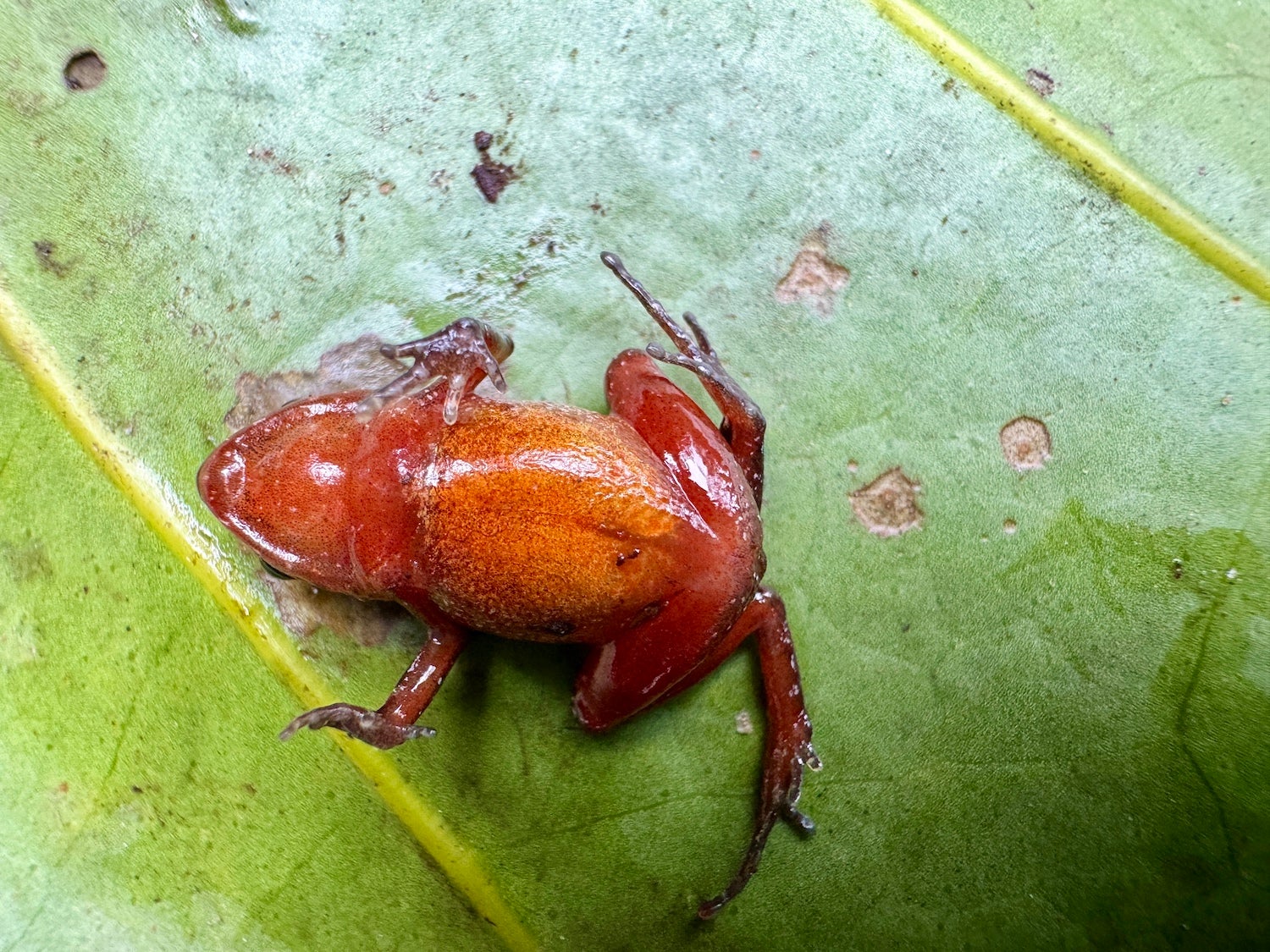Rediscovering a lost species is exciting, and important for boosting conservation efforts. However, it is not for the faint of heart. An international team of scientists traversed 75 miles of steep mountain terrain to capture the first recorded photos of a bird once considered lost. The yellow-crested helmetshrike (Prionops alberti) was listed as a ‘lost bird’ by the American Bird Conservancy because it hadn’t been seen by scientists in almost 20 years.
[Related: These unusual plants had disappeared—until citizen scientists helped hunt them down.]
That did not deter a group of scientists from the University of Texas at El Paso (UTEP). They embarked on a six-week expedition to the Itombwe Massif mountain range in eastern Democratic Republic of the Congo alongside a group of Congolese researchers from the Centre de Recherche en Sciences Naturelles. The team trekked by foot for over 75 miles to survey all of the birds, amphibians, and reptiles they found along the way.
While exploring the cloud forests on the slopes of a mountain, the team stumbled upon the helmetshrike, with its bright yellow “helmet” and black plumage. They primarily feed on insects and other small prey and forage in tight groups. The birds were observed in very noisy groups in the forest’s midstory–the area between the shortest and tallest trees, between the top canopy and shrub layer.
[Related: Why small, scary, and ‘non-charismatic’ lost species are harder to rediscover.]
“It was a mind-blowing experience to come across these birds,” UTEP ornithologist Michael Harvey said in a statement. “We knew they might be possible here, but I was not prepared for how spectacular and unique they would appear in life.”
The yellow-crested helmetshrike is endemic to the western slopes of the Albertine Rift of Central Africa. About 18 birds in total were found at three sites during the expedition. The photos of the helmetshrikes have been reviewed and confirmed by Cameron Rutt, who leads the American Bird Conservancy’s Lost Birds project.
The December 2023 to January 2024 expedition also led to the rediscovery of the red-bellied squeaker frog (Arthroleptis hematogaster), which had not been documented by scientists in this region since the 1950s. The frog rediscovery was confirmed by biologist David Blackburn from the University of Florida’s Museum of Natural History.

While the photos are exciting, the team remains concerned for the future of the recently rediscovered frog and bird species. The IUCN Red List suggests that the helmetshrikes may lose over 90 percent of its range due to climate change by 2080. Amphibians like the red-bellied squeaker frog are also the most threatened class of invertebrates due to climate change.
“Mining and logging as well as the clearing of forests for agriculture are making inroads deep into the forests of the Itombwe range,” Harvey said. “We are in discussions with other researchers and conservation organizations to further efforts to protect the region’s forests and the helmetshrike. Right now is a golden opportunity to protect these tropical forests, so that we don’t lose species like the helmetshrike before they are known and studied.”





